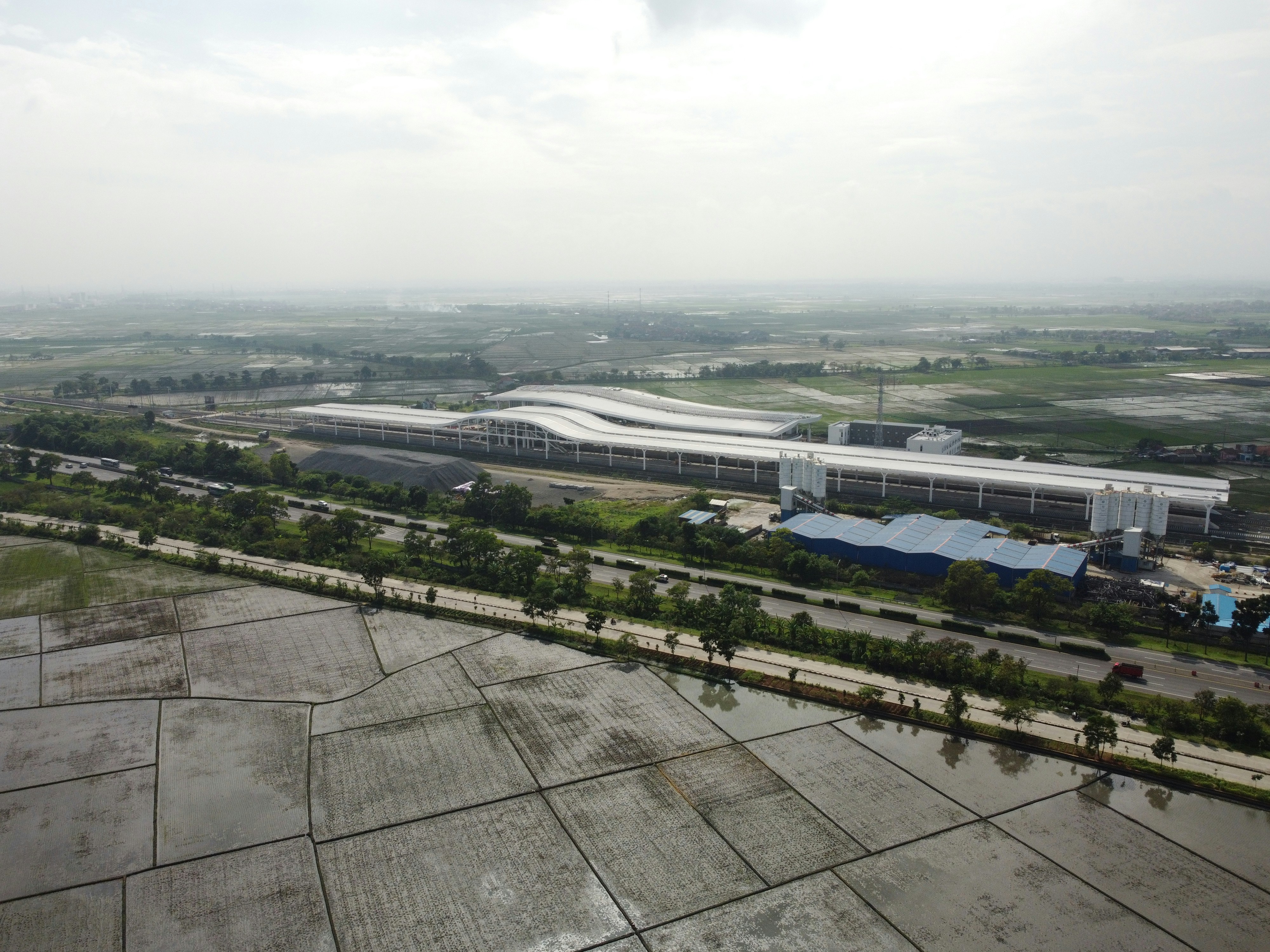
1. Solar Power
Solar power is one of the most well-known and widely used renewable energy technologies. It harnesses the energy from the sun and converts it into electricity using photovoltaic (PV) cells. These cells are made up of semiconductor materials that create an electric current when exposed to sunlight. Solar power systems can be installed on rooftops or in large solar farms, providing clean and sustainable energy.
One of the key advantages of solar power is its abundance. The sun is an infinite source of energy, and it provides more energy to the Earth in one hour than the entire world consumes in a year. This means that solar power has the potential to meet a significant portion of our energy needs.
Another advantage of solar power is its environmental friendliness. Unlike fossil fuels, solar power does not produce harmful greenhouse gas emissions or air pollutants. This makes it a clean and sustainable alternative to traditional energy sources. Additionally, solar power systems have a long lifespan, typically lasting for 25 to 30 years, with minimal maintenance required.
Solar power also offers economic benefits. As the cost of solar panels continues to decrease, installing solar power systems has become more affordable for both residential and commercial users. In fact, many governments and organizations offer incentives and subsidies to encourage the adoption of solar power. These incentives can include tax credits, rebates, and net metering programs, which allow users to sell excess electricity back to the grid.
Furthermore, solar power can enhance energy security. By diversifying our energy sources and reducing reliance on fossil fuels, we can become less vulnerable to price fluctuations and geopolitical tensions associated with traditional energy sources. Solar power also decentralizes energy production, allowing individuals and communities to generate their own electricity and become more self-sufficient.
Despite these advantages, there are also some challenges to the widespread adoption of solar power. One of the main challenges is the intermittency of solar energy. Solar power generation is dependent on sunlight, which is not available 24/7. To overcome this challenge, energy storage technologies, such as batteries, are being developed to store excess energy generated during the day for use during periods of low sunlight.
In conclusion, solar power is a promising renewable energy technology that offers numerous benefits. Its abundance, environmental friendliness, economic advantages, and potential for enhancing energy security make it a viable solution for our energy needs. With ongoing advancements in technology and supportive policies, solar power has the potential to play a significant role in transitioning to a sustainable and low-carbon future.
2. Wind Power
Wind power utilizes the kinetic energy of the wind to generate electricity. Wind turbines, often seen in wind farms, have large blades that rotate when the wind blows. This rotation drives a generator, producing electricity. Wind power is a highly scalable technology and can be used for both small-scale applications, such as residential homes, and large-scale projects, such as offshore wind farms.
Wind power has gained significant attention in recent years as a renewable energy source due to its numerous advantages. One of the key benefits of wind power is its environmental friendliness. Unlike fossil fuels, wind power does not produce harmful emissions or contribute to air pollution. This makes it a clean and sustainable alternative to traditional energy sources.
Furthermore, wind power is a renewable energy source, meaning it will never run out as long as the wind continues to blow. This is in stark contrast to finite resources like coal, oil, and natural gas, which are being depleted at an alarming rate. By harnessing the power of the wind, we can reduce our reliance on non-renewable resources and move towards a more sustainable future.
In addition to its environmental benefits, wind power also has economic advantages. Wind farms can create jobs and stimulate local economies. The construction and maintenance of wind turbines require skilled labor, providing employment opportunities for local communities. Moreover, wind power can help reduce dependence on imported energy sources, improving energy security and reducing the vulnerability to price fluctuations in the global energy market.
The scalability of wind power is another significant advantage. Wind turbines can be installed in various locations, ranging from onshore sites to offshore areas with strong winds. This flexibility allows for the development of wind power projects in regions where other renewable energy sources may not be feasible. Additionally, advancements in technology have made wind turbines more efficient and capable of generating larger amounts of electricity.
Despite its many benefits, wind power also faces challenges. One of the main concerns is the intermittent nature of wind. The availability of wind energy fluctuates, making it necessary to have backup power sources or energy storage systems to ensure a consistent supply of electricity. Additionally, the visual impact and potential noise pollution from wind turbines can be a source of contention in some communities.
To address these challenges, ongoing research and development efforts are focused on improving wind turbine technology, enhancing energy storage capabilities, and finding innovative solutions to mitigate the visual and noise impacts. Governments and organizations around the world are also implementing policies and incentives to promote the adoption of wind power and accelerate its growth.
In conclusion, wind power is a promising renewable energy source that offers numerous advantages. Its environmental friendliness, renewable nature, economic benefits, and scalability make it a viable option for meeting our energy needs while reducing our carbon footprint. With continued advancements in technology and supportive policies, wind power has the potential to play a significant role in the transition to a sustainable energy future.
Hydropower has been utilized for centuries, dating back to ancient civilizations that used water wheels to grind grain and power various mechanical devices. However, it wasn’t until the late 19th century that hydropower began to be harnessed on a larger scale for electricity generation. Since then, it has become a significant contributor to the global energy mix.
One of the key advantages of hydropower is its reliability. Unlike other renewable energy sources such as solar or wind power, which are dependent on weather conditions, hydropower can provide a consistent and predictable supply of electricity. This stability is particularly valuable for meeting baseload energy demand, which refers to the minimum amount of power required to meet the needs of a region or country at all times.
The construction of hydropower plants typically involves the creation of reservoirs by building dams across rivers or other water bodies. These reservoirs serve multiple purposes, including flood control, irrigation, and water supply for domestic and industrial use. When electricity demand is high, water is released from the reservoirs and flows through turbines, which are connected to generators. As the water passes through the turbines, the spinning motion generates electricity.
Hydropower plants can vary in size, from small-scale installations that power a single community to large-scale projects that provide electricity to entire regions. The size of a hydropower plant depends on factors such as the available water resources, the topography of the area, and the energy demand it aims to meet. Some countries, particularly those with abundant water resources, have developed extensive hydropower infrastructure, making it a significant part of their energy portfolios.
However, the development of hydropower does come with its challenges. One of the main concerns is the environmental impact of building large dams. The construction of dams can disrupt natural river ecosystems, alter the flow of water, and displace communities living in the affected areas. Additionally, the creation of reservoirs can lead to the accumulation of sediment and the release of greenhouse gases from decomposing organic matter.
Despite these challenges, hydropower remains an important and widely used renewable energy source. It offers a clean and sustainable alternative to fossil fuels, contributing to the reduction of greenhouse gas emissions and mitigating the impacts of climate change. As technology continues to advance, efforts are being made to minimize the environmental impact of hydropower and improve its efficiency. These include the development of fish-friendly turbines, the implementation of fish passage systems, and the exploration of innovative designs that minimize the need for large dams.
In conclusion, hydropower has a long history as a renewable energy source and continues to play a significant role in the global energy landscape. Its reliability, scalability, and low greenhouse gas emissions make it a valuable asset in the transition towards a more sustainable and carbon-neutral future.
4. Biomass Energy
Biomass energy utilizes organic matter, such as plants and agricultural waste, to produce heat and electricity. This renewable energy technology involves the combustion or fermentation of biomass materials to release energy. Biomass can be used directly as fuel or converted into biogas, biofuels, or even electricity. It is considered a carbon-neutral energy source since the carbon dioxide released during combustion is offset by the carbon dioxide absorbed by the plants during their growth.
The use of biomass energy has gained significant attention in recent years due to its potential to reduce greenhouse gas emissions and dependence on fossil fuels. As the world grapples with the challenge of climate change, finding sustainable and clean energy sources has become a top priority. Biomass energy offers a viable solution by utilizing organic waste materials that would otherwise end up in landfills and emit harmful gases.
One of the key advantages of biomass energy is its versatility. It can be derived from various sources, including crop residues, forest residues, animal manure, and dedicated energy crops. This diversity in feedstock allows for a more decentralized energy production system, reducing the reliance on centralized power plants and transmission infrastructure.
Furthermore, biomass energy can provide a reliable and consistent source of power. Unlike solar or wind energy, which are intermittent, biomass power plants can operate continuously, ensuring a steady supply of electricity. This makes it an attractive option for meeting baseload power demand, especially in areas where other renewable energy sources may be limited.
In addition to electricity generation, biomass energy can also be used for heating purposes. Biomass boilers and stoves are commonly used in residential, commercial, and industrial settings to provide space heating and hot water. By replacing fossil fuel-based heating systems with biomass alternatives, significant carbon emissions can be avoided.
Another significant advantage of biomass energy is its potential to create jobs and stimulate economic growth. The production, processing, and utilization of biomass require a skilled workforce, providing employment opportunities in rural areas. Moreover, the cultivation of energy crops can provide additional income for farmers and contribute to agricultural diversification.
However, it is important to consider the environmental and social impacts associated with biomass energy. The sourcing and transportation of biomass feedstock should be managed sustainably to avoid deforestation, habitat destruction, and competition with food production. Additionally, the combustion of biomass can release pollutants such as nitrogen oxides and particulate matter, which can have detrimental effects on air quality and human health. Therefore, it is crucial to implement appropriate emission control technologies and ensure strict regulatory standards.
In conclusion, biomass energy offers a promising solution to the challenges of climate change and energy security. Its ability to utilize organic waste materials, provide a consistent source of power, and create economic opportunities makes it an attractive renewable energy option. However, careful planning, sustainable sourcing, and effective pollution control measures are essential to maximize the benefits and minimize the potential drawbacks of biomass energy.
Geothermal energy is a fascinating and promising form of renewable energy that has the potential to revolutionize the way we generate electricity and heat our homes. The Earth’s crust contains an abundant amount of heat, and geothermal energy harnesses this heat to produce power in a sustainable and environmentally friendly manner.
The process of generating geothermal energy begins with drilling deep wells into the Earth’s crust, typically several kilometers deep. These wells tap into underground reservoirs of hot water or steam, which are naturally occurring due to the heat from the Earth’s core. The temperature of these reservoirs can vary greatly depending on the location, ranging from a few hundred degrees Fahrenheit to over a thousand degrees.
Once the hot water or steam is brought to the surface, it is directed towards a power plant where it is used to drive turbines. These turbines are connected to generators, which convert the rotational energy into electricity. The generated electricity can then be distributed through power grids to homes, businesses, and industries.
One of the major advantages of geothermal energy is its reliability and consistency. Unlike solar or wind power, which are dependent on weather conditions, geothermal energy is available 24/7, regardless of the time of day or weather conditions. This makes it an ideal source of baseload power, meaning it can provide a continuous and stable supply of electricity.
Another advantage of geothermal energy is its minimal environmental impact. Unlike fossil fuels, which release harmful greenhouse gases when burned, geothermal energy is a clean source of power. The process of extracting geothermal energy does produce some emissions, mainly in the form of carbon dioxide and hydrogen sulfide, but these emissions are significantly lower compared to traditional fossil fuel power plants.
Furthermore, geothermal energy has the potential to provide not only electricity but also heat. In addition to power plants that generate electricity, geothermal heat pumps can be used to directly heat buildings and homes. These heat pumps utilize the constant temperature of the Earth’s crust to provide efficient heating and cooling, reducing the reliance on traditional heating and cooling systems.
However, despite its numerous advantages, geothermal energy does have some limitations. One of the main challenges is the limited availability of geothermal resources. Geothermal reservoirs are not evenly distributed across the globe, and they are typically found in areas with specific geological characteristics, such as tectonic plate boundaries or volcanic regions. This means that not all countries or regions have access to geothermal energy.
Additionally, the upfront costs of developing geothermal power plants can be high. The drilling and exploration required to locate and access geothermal reservoirs can be expensive, and the initial investment may deter some investors or governments from pursuing geothermal projects. However, once a geothermal power plant is operational, the ongoing costs are relatively low compared to fossil fuel power plants, making it a cost-effective long-term solution.
In conclusion, geothermal energy is a valuable and promising form of renewable energy that has the potential to play a significant role in our transition to a more sustainable future. Its reliability, minimal environmental impact, and ability to provide both electricity and heat make it a versatile and attractive option. While there are challenges to overcome, such as limited availability and upfront costs, the benefits of geothermal energy far outweigh the drawbacks. With continued research and investment, geothermal energy could become a major player in the global energy landscape.
6. Tidal Energy
Tidal energy harnesses the kinetic energy of ocean tides to generate electricity. This renewable energy technology involves the use of turbines or underwater devices that capture the energy from the moving tides. As the tides rise and fall, the captured energy is converted into electricity. Tidal energy is a predictable and renewable source of power, but it requires specific coastal locations with strong tidal currents.
Tidal energy is a promising form of renewable energy that has gained attention in recent years. The concept behind this technology is relatively simple: as the tides move in and out, they create a powerful force that can be harnessed to generate electricity. This force is captured by turbines or underwater devices that are strategically placed in areas with strong tidal currents.
One of the main advantages of tidal energy is its predictability. Unlike other renewable energy sources such as wind or solar power, which are dependent on weather conditions, tides are predictable and consistent. This means that energy production can be accurately forecasted, allowing for better planning and integration into the electrical grid.
Another advantage of tidal energy is its high energy density. Tides are incredibly powerful, with the potential to generate large amounts of electricity. In fact, some tidal energy projects have the capacity to generate enough power to meet the energy needs of thousands of homes. This makes tidal energy an attractive option for countries looking to reduce their reliance on fossil fuels and transition to cleaner sources of energy.
However, despite its potential, tidal energy also faces some challenges. One of the main limitations is the need for specific coastal locations with strong tidal currents. Not all coastlines are suitable for tidal energy generation, and identifying suitable sites can be a complex process. Additionally, the installation and maintenance of tidal energy devices can be costly and require significant investment.
Despite these challenges, the development of tidal energy technology continues to progress. Researchers and engineers are constantly working to improve the efficiency and reliability of tidal energy devices, as well as exploring new methods for capturing tidal energy. As technology advances and costs decrease, tidal energy has the potential to become a significant contributor to the global energy mix.
In conclusion, tidal energy is a renewable energy technology that harnesses the power of ocean tides to generate electricity. It offers several advantages, including predictability and high energy density. However, it also faces challenges such as site-specific requirements and high installation costs. Nevertheless, with ongoing advancements in technology, tidal energy has the potential to play a crucial role in the transition towards a more sustainable and clean energy future.
Despite being in the early stages of development and deployment, wave energy holds great potential as a renewable power source. The vastness of the world’s oceans provides an abundant supply of wave energy that can be harnessed to generate electricity. This form of renewable energy has several advantages over other sources, such as solar or wind power.
One of the key advantages of wave energy is its consistency. Unlike solar or wind power, which can be intermittent depending on weather conditions, waves are a constant and predictable source of energy. The regular ebb and flow of the tides ensure a continuous supply of wave energy, making it a reliable and stable source of power.
Wave energy also has a higher energy density compared to other renewable sources. The density of water is much greater than that of air, which means that the energy contained in a wave is significantly higher than that of wind or sunlight. This higher energy density allows for the extraction of more power from a smaller area, making wave energy more efficient and cost-effective.
Furthermore, wave energy has a minimal environmental impact compared to other forms of energy generation. Unlike fossil fuels, which release harmful greenhouse gases and contribute to climate change, wave energy is clean and does not produce any emissions. The devices used to capture wave energy are also designed to have minimal impact on marine life and ecosystems.
However, there are still challenges to overcome in the development and deployment of wave energy technology. The harsh and corrosive marine environment poses technical challenges in designing devices that can withstand the forces of the ocean. Additionally, the high costs associated with building and maintaining wave energy infrastructure have hindered its widespread adoption.
Despite these challenges, ongoing research and development efforts are focused on improving wave energy technology and reducing costs. Innovations in materials, design, and manufacturing techniques are being explored to create more durable and cost-efficient wave energy devices. Government support and incentives are also crucial in driving the growth of the wave energy industry.
In conclusion, wave energy is a promising source of renewable power that utilizes the energy from ocean waves to generate electricity. Its consistency, higher energy density, and minimal environmental impact make it an attractive alternative to fossil fuels. However, further advancements in technology and cost reduction are needed to fully harness the potential of wave energy and integrate it into the global energy mix.
8. Fuel Cells
Fuel cells are devices that generate electricity through a chemical reaction between hydrogen and oxygen. This renewable energy technology offers a clean and efficient way to produce electricity. Fuel cells can be used in various applications, from small portable devices to large-scale power plants. They produce electricity without combustion, resulting in minimal emissions and high energy efficiency.
Fuel cells work by converting the chemical energy of hydrogen and oxygen into electrical energy through a process called electrochemical reaction. The basic structure of a fuel cell consists of an anode, cathode, and an electrolyte. The anode is where hydrogen gas is supplied, while the cathode receives oxygen from the air. The electrolyte acts as a medium for ion transfer between the anode and cathode.
One of the main advantages of fuel cells is their ability to operate silently and with almost no moving parts. This makes them highly reliable and durable, requiring minimal maintenance compared to traditional combustion-based power generation systems. Additionally, fuel cells have a higher energy conversion efficiency compared to conventional power plants, which often waste a significant amount of energy as heat.
Fuel cells can be classified into different types based on the type of electrolyte used, such as proton exchange membrane fuel cells (PEMFC), solid oxide fuel cells (SOFC), and molten carbonate fuel cells (MCFC). Each type has its own advantages and limitations, making them suitable for different applications.
In recent years, fuel cells have gained significant attention as a potential solution to reduce greenhouse gas emissions and dependence on fossil fuels. Hydrogen, the main fuel used in fuel cells, can be produced from a variety of sources, including renewable energy sources such as solar and wind power. This makes fuel cells an attractive option for achieving a sustainable and carbon-neutral energy system.
Fuel cells have already found applications in various sectors, including transportation, stationary power generation, and portable devices. In the automotive industry, fuel cell vehicles (FCVs) offer a zero-emission alternative to conventional internal combustion engine vehicles. FCVs use hydrogen as fuel, which can be stored onboard and converted into electricity to power the vehicle’s electric motor.
In the stationary power generation sector, fuel cells are being used to provide clean and reliable electricity for homes, buildings, and remote areas. They can be integrated with renewable energy sources to create hybrid power systems that ensure a constant supply of electricity. Fuel cells are also being used in portable devices such as laptops and smartphones, providing a longer runtime compared to traditional batteries.
Despite their numerous advantages, there are still challenges that need to be addressed for widespread adoption of fuel cells. One of the main challenges is the cost of fuel cell systems, which is currently higher compared to conventional power generation technologies. Research and development efforts are focused on reducing the cost and improving the durability of fuel cell components to make them more economically viable.
In conclusion, fuel cells offer a promising solution for clean and efficient electricity generation. Their ability to produce electricity without combustion, minimal emissions, and high energy efficiency make them an attractive option for a wide range of applications. Continued research and development efforts are expected to further improve the performance and cost-effectiveness of fuel cells, paving the way for a sustainable energy future.
Exploring Renewable Energy Technologies
Introduction to Smart Grid Technology: Enhancing Efficiency, Reliability, and Sustainability in Electrical Grids
The World of Smart Materials: Properties,Types,Behaviors Prospects
AI for Social Good: Leveraging Artificial Intelligence to Address Societal Challenges and Promote Positive Outcomes
The General Data Protection Regulation (GDPR): A Comprehensive Guide to Data Privacy and Protection

Implementing Machine Learning Operations (MLOps): Streamlining Model Deployment and Management for Success
The API Economy: Enabling Seamless Communication and Data Exchange

DevOps: Streamlining Software Development and Operations for Efficient Delivery







